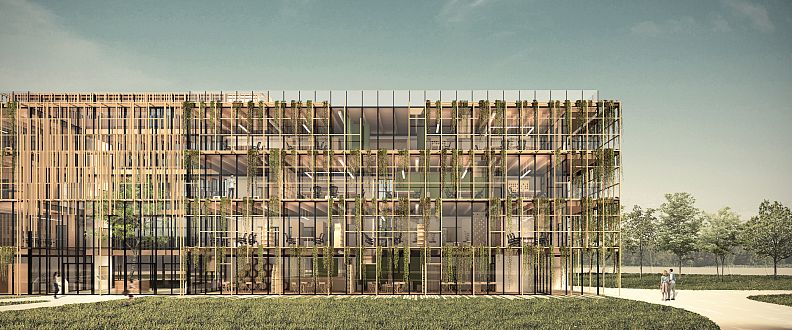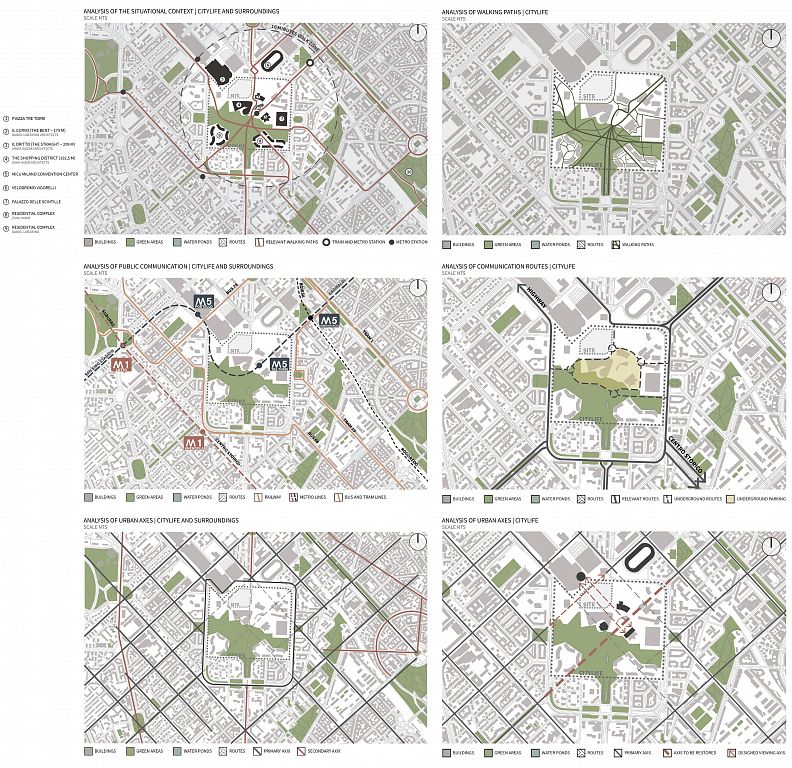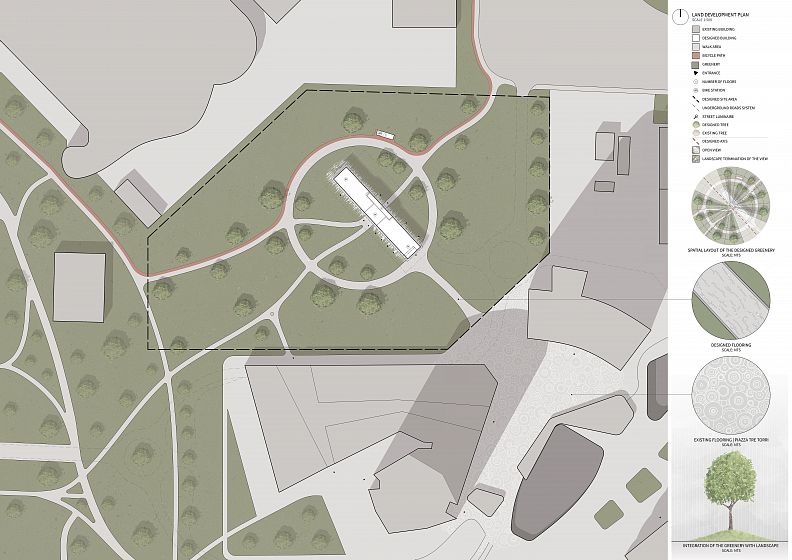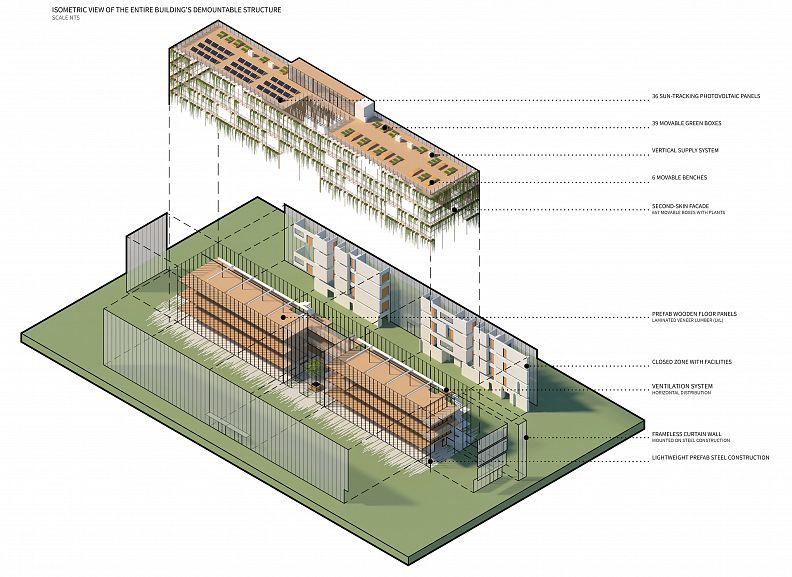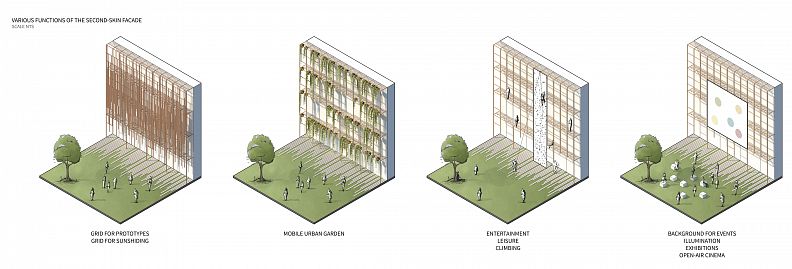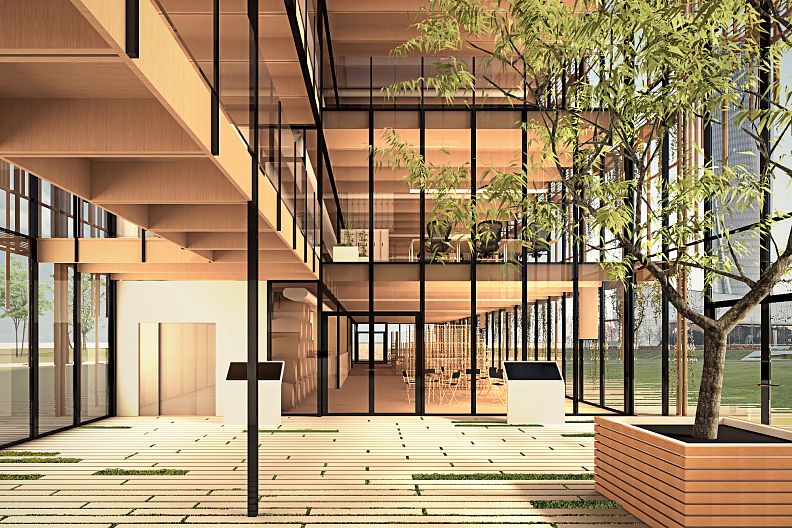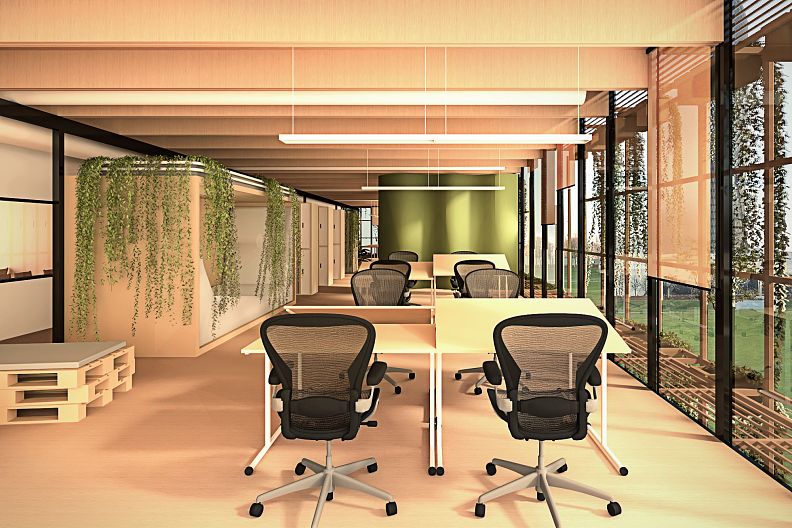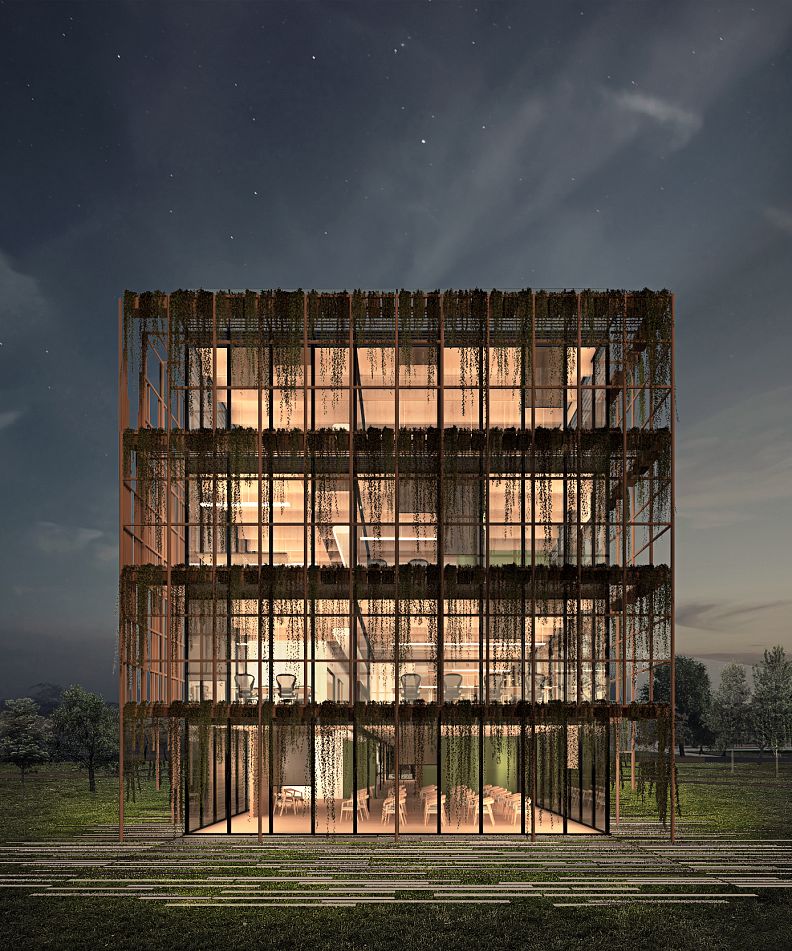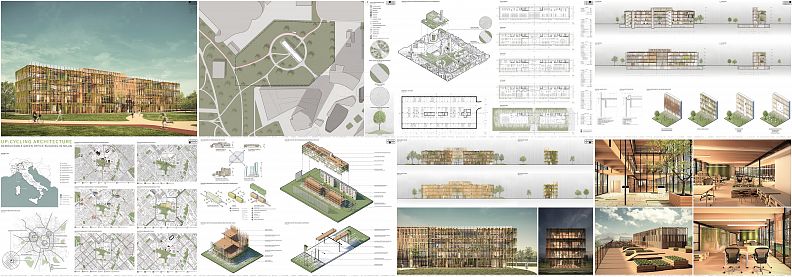Up:Cycling Architecture | Demountable green office building in Milan

Project idea
“It is not the strongest of the species that survives, but rather, that which is most adaptable to change”.
The above paraphrase of Darwin's considerations indicates that only constant adaptation to changing conditions allows for continuous development. As architects, we often notice that the context of our design changes even before the building is completed. Rapid social, financial and ecological changes accelerate aging of buildings, so they become abandoned even long before their physical death. As a result, we end up with huge number of abandoned buildings that is constantly increasing. Their demolition and adaptation presently stand for 1/3 of world waste generation leading to irreversible soil and air contamination.
Currently, a human symbiosis with ecosystem is one of the most urgent architectural and urban issues in relation to the Earth's ecosystem and this innovative green building can be the answer to restore our connection with nature.
Project description
The entire building is completely demountable and can be easily modified for ever-changing needs, as all building’s components can be upcycled in a circular manner. It is worth noting the building's structural elements also act as a frame for external face simultaneously, what reduces costs and carbon footprint at the production stage.
One of the most important design assumptions is to cover the entire building with extensive greenery creating the mobile urban garden, what is the response to the air quality in Milan. For this purpose, a wooden second-skin façade is equipped with 657 movable boxes with plants. It naturally filters and diffuses daylight and thus prevents glare for users. It also further strengthens the relationship between the interior and the surrounding park. The extensive implementation of greenery on the roof, as well as around the building improves its microclimate, reduces heat loss, and prevents overheating of the plants itself. It is possible due to the chimney effect (the outflow of the warm air from behind the plants), which appears in the space between the green façade and the plants. It also filters the air, what is the answer to predominantly moderate air quality in Milan. Moreover, it creates the mobile urban garden that can be inhabited by local fauna, e.g., birds and butterflies.
Thus, the building is enriched with solutions encouraging interaction not only between its users, but also with nature. For this purpose, the second-skin facade is designed in such a way that it can serve for people of all ages in multiple ways: as a background for events, illumination, exhibition, open-air cinema or climbing wall.
Technical information
The use of prefabricated modular stainless steel structure gives wide possibilities of interior modification and adaptation of the entire building to current needs. It also allows for easy extension of the facility by installing subsequent modules at any time throughout the entire life of the building. Modifications may occur depending on the increase or decrease in demand or economic situation, that reduces the risk of financial loss for the owner. In this regard, the main advantages are significant reduction of the implementation time and costs, compared to standard construction, and thus – lower rental costs. Moreover, the use of this construction technology is beneficial in terms of ecology, as it allows to minimize construction waste and carbon foorprint.
As people spend about 90% of their lifespan indoors, it is extremely important to consider how buildings affect the quality of life and health of their users. For this reason, the building uses the new Double Dynamic Lighting concept (DDL) based on the latest scientific research in the field of healthy lighting (Hansen, E. K.; et. al., Indoor and Built Environment). It relies on the lighting system that responses to daylight conditions through automatic adjustment of the emitted light spectrum and intensity to support natural light. This solution helps to create healthy work environment as it does not disrupt the employee’s circadian clock. Furthermore, it also can contribute to improve employee satisfaction and productivity.
The building’s interior is equipped with innovative green technology, such as honeycomb cardboard partitions that is currently little known, but it has great potential. The material comes from upcycled honeycomb cardboards and due to numerous voids in its structure provides high acoustic insulation and is exceptionally light, so easy to assemble and disassemble.
